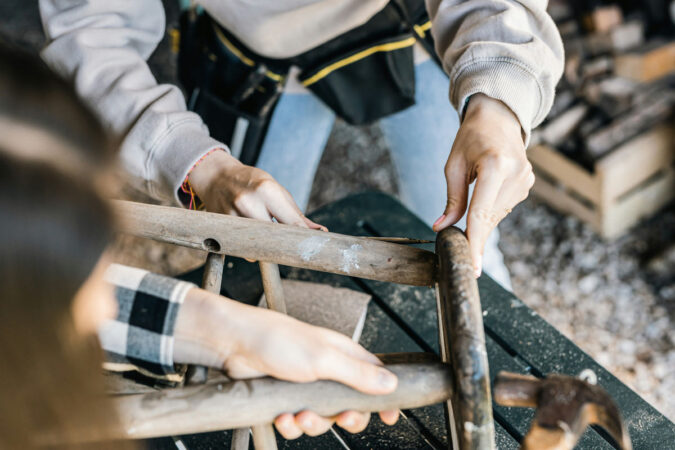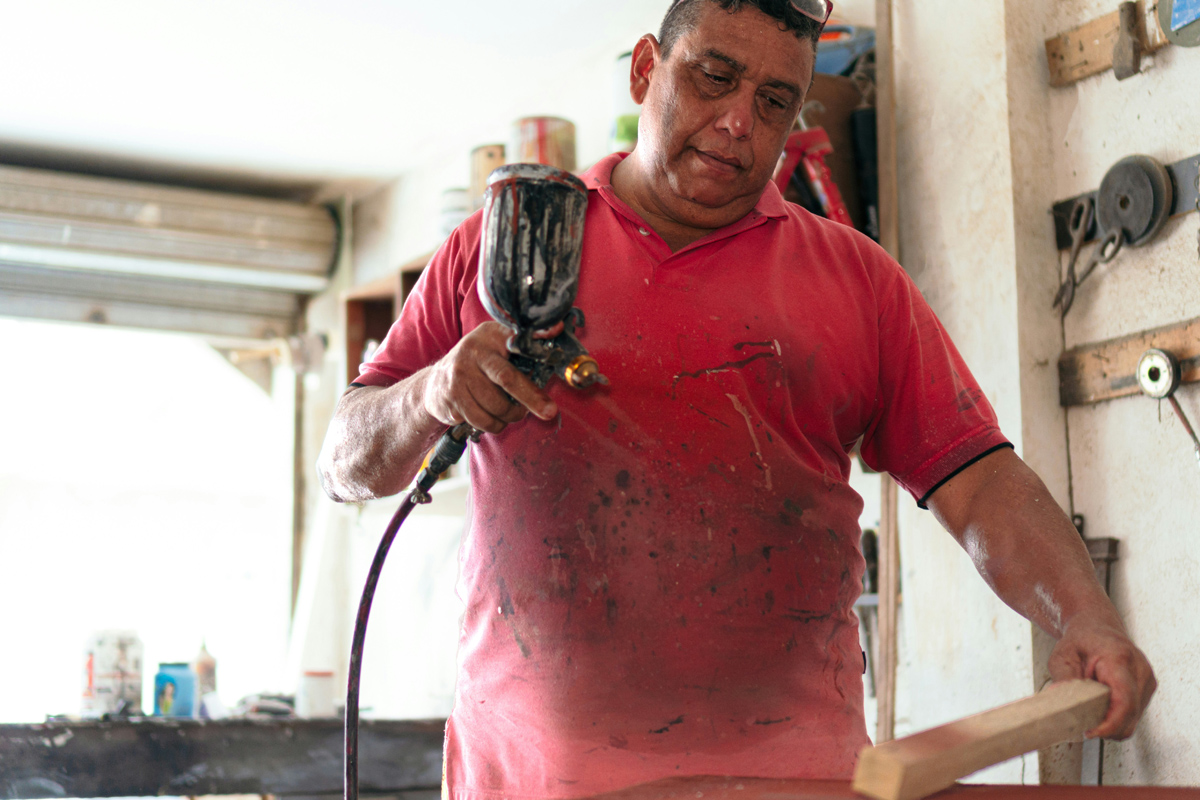There’s no greater time in a retired couple’s life than when their partner is out from underfoot, doing a project. While everyone thinks they know what retirement will be like, the truth is, no matter how many trips you take, or how many bucket list books you get through, there’s still plenty of hours in the day to fill. Especially, if you’re like me and NEED to keep busy. So, I’m always on the look out for suitable retirement hobbies for myself, and more importantly, my husband.
Restoring Furniture Ticks a Lot of Boxes
- I love love love to op shop, go garage “sailing” and scroll Facebook marketplace. I love a bargain!
- It’s something we have in common – I like to hunt down lovely things and do the basic restorations. He does the tricky stuff!!
- The husband was quite the craftsman back in his day and he’s happiest doing things with his hands.
- It’s exercise without feeling like exercise.
- We have a solid collection of tools in “his shed”.
- Our retirement hobbies must be doable “on a budget” because we’re forever dreaming up new places to visit and that’s expensive!
- We have limited space so all projects must fit in “his shed”.
- What’s better than the thrill of finding a proper bargain? Selling it on for some wine money.
- Nice furniture is too expensive. Cheap furniture is too ugly. Ikea furniture is just rubbish.
- I love antiques and our home has plenty of beautiful pieces. I want the furniture to match!
What Not to Do At First

I cannot stress this enough, do NOT start with an original Georgian Mahogany Armoire. Stop. Start with a well-designed, “was probably expensive in its day”, solid 1970s pine side table that’s $20 on Facebook Marketplace. Start small. Start with something that you won’t destroy for all time with your lack of skill.
- Research the item. Know what its made from, what its worth and whether its worth your time restoring. If you love antique shopping like I do, you’ll be able to tell if it’s a quality piece or a piece of junk pretty easily.
- Start very small. Both on the ambition front and on the physical size of the item. Don’t try to learn to reupholster or hand carve hardwood on the first project. Furniture restoration will take you much longer than you expect. Starting small means there is less chance of abandoning it before you finish!
- Use Google Lens. Open Google on your phone and tap the little camera icon next to the search box. Hold your smart phone up like you’re going to take a photo of the item. Then select “shop” and Google will show you all the similar items online. You can see roughly what the item might be worth and get information on the designer, age, materials etc.
- Figure out what’s missing. Most restoration pieces I’ve found have at least one handle missing or broken. The mirror is cracked or trashed. The draws are lined with foulness. There’s a missing button. One leg needs replacing. The joy is finding the perfect replacement.
- Know the measurements. Restoration means getting everything just right. So, take ALL the measurements before you go looking for replacement handles and the like. You don’t want to make any extra holes in an original piece. Also know where you are going to put it. If you’ve got the perfect spot for it, measure to be sure it’s perfect. If you have nowhere to put it, and plan to sell it on Marketplace, check out what they sell for so you know you can make yourself a little wine money in the process.
- Find original (or close to original) replacement parts. Sure, ebay. Sure antique sites. But… have you ever visited Salvage Yards and Dump Shops? They have so many tiny treasures like original handles and quirky little pieces for a few dollars. And MOST of my best silverware and crockery finds have been in a ‘bin’ at a dump shop. People will throw out the craziest stuff and I am all about paying $3 for solid silver flatware with ornate handles. YES PLEASE.
- Visit “out of town” op shops. The smaller the town, the better the op shop, guaranteed! Also, consider joining a few Facebook groups on op shopping – this one is EXCELLENT.
- Figure out what you need to know first. Need to strip paint? Learn what kinds of paint stripper will be best for the material its made from and the level of detail it sports. There’s a good resource for newbies here. Want to preserve the patina? Need to replace bits or make repairs? My go-to is YouTube channels. No matter what the challenge, there’s ABSOLUTELY a how-to video about it.
- Figure out what you need to buy. There’s no point restoring a $50 coffee table if you need a $700 lathe to do it. Price your tools and materials before you press go on the project.
- Get used to your tools. Sanding, by hand, is a good ‘starter’ lesson. It sucks. It takes FOREVER and is hard to perfect. But, a key skill, so start by sanding a part of your piece that’s discreetly hidden away from view – you know, if you stuff it up.
- Accept the long road ahead. It takes a long time. This is a project that you may put down one day and then pick back up in a month or more. Accept that so you don’t feel guilt if you don’t finish it all in one weekend!
It’s About The Project Not the Piece
If you stuff it up, that’s OK. That’s why you started on a ‘history will not weep” piece. Why is this in the health category? It’s easy for retirement to be a time of isolation and loneliness. It’s easy to fall into a routine of watching TV and doing…nothing. Starting a project that’s outside your comfort zone keeps your brain and body active. Restoring furniture is one of those retirement hobbies that suits a good cross-section of interests – so it’s worth considering. You don’t need to be Rembrandt to paint a coffee table, you just need to be interested.




